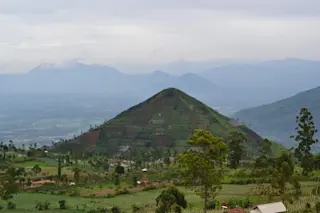The digitally unwrapped scroll. (Credit: Seales et. al/Science Advances)
A new image processing technique has peered into an ancient parchment scroll from Israel, allowing researchers to virtually unwrap the brittle parchment and read the text contained inside for the first time.
The En-Gedi scroll was discovered in Israel 1970, but had been so badly charred that even touching it risked disintegration. It had been stored for 45 years, with no hope of gleaning its secrets until now. In collaboration with the Israel Antiquities Authority, researchers from the University of Kentucky used a form of X-ray analysis called microcomputed tomography (micro-CT) to peel back each delicate layer of the scroll and digitally render a flat, readable version of the artifact.
Their process was painstaking, and involved several discrete steps. To fully read the scroll, the researchers had to separate each tightly wound layer from the whole, a process made even more ...














